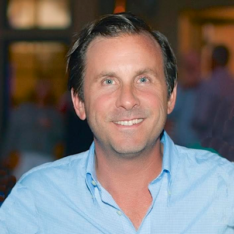The Very American Meaning of Roman Kaplan, Founder of Russian Samovar

“They should have their passports stamped right away.” That’s what Cato Institute co-founder Ed Crane once remarked about Cuban refugees who had navigated shark-infested waters to get to the U.S. His thinking was that people who had risked so much for freedom had shown that they were American, through and through. Confirm their citizenship right away, along with the citizenship of others making the ultimate sacrifice to be American.
Crane would likely enjoy the story of Roman Kaplan. Kaplan recently died, but did so as an American. And was he ever an American.
This most enterprising of individuals grew up in Leningrad, and according to his obituary written by David Margolick in the New York Times, Kaplan nearly starved during the city’s wartime siege. Frostbite during the war took some of his toes for good.
Kaplan was a teacher who knew multiple languages. In Margolick’s words, he “had been conspicuous in gray 1950s Leningrad, a book by Sartre (in the original French) sticking out of a pocket of his brown suede coat.” It’s no insight to say the dreary, charmless Soviet Union was not enough for him. Kaplan was known to talk to Westerners who made it into the country, including Truman Capote. He actually showed Leonard Bernstein around Leningrad, and wrote him a letter after their meeting.
The note was intercepted only for Kaplan to be denounced as “a fly on manure.” Kaplan subsequently fled to Moscow, then to Israel in 1977, then to New York. He started his restaurant, Russian Samovar, after a dare by his wife. The restaurant was, in the telling of Margolick, “a civilization in exile, a refuge for writers, artists, musicians, dancers and poets who, like Mr. Kaplan himself, had either fled from or been banished by the Soviet Union.” Mikhail Baryshnikov, among other bold names, was a regular.
Ok, so what does it all mean?
The view here is that Kaplan’s story means so many things on so many levels. For starters, his story explains something about New York City that economic theory in a way cannot. Getting into specifics, there’s a tendency for some in the economic space to say that human capital migrates to where taxes are lowest. About this assertion, the view here is to the extent that there is taxation, it’s generally too high. Reduce taxes. Always. Why should politicians be the winners when we’re enterprising?
Still, New York City’s abundant prosperity is a reminder that tax rates aren’t everything when it comes to economic growth. NYC is, per Ken Auletta, “the final test” for the ambitious of the U.S. and far beyond. Please consider this the next time you visit New York City, or view it from afar: in normal times it’s the most wealth dense locale on earth.
It all speaks to something that is a statement of the obvious, but also an elusive truth for the relentlessly policy focused: talent trumps tax rates, and the race isn’t even close. Even though New York City can sadly lay claim to some of the highest tax rates in the U.S., the city shimmers. It’s a vision of success. A walk through New York includes passing by the world’s most remarkable people. The talented all-too-often want to be in New York if they’re not already there, which easily explains why there’s so much money in such a small space.
Looking at New York through the prism of Kaplan, it insults Detroit, Kansas City or Stockton not one iota to say Kaplan was not going to wind up in any of the three, along with just about any other American city. Kaplan plainly had a grandiose vision of and for himself from the earliest of days. Kaplan was New York. People like him are what make New York, New York. This is worth remembering with immigration in mind.
With immigration, we’re almost as a rule taking in those who are courageous, and who want something better for themselves. Kaplan certainly did.
In reading about Kaplan, I found myself wondering if he and Donald Trump knew each other. It’s not impossible. In a city of big names, the big names “collect” each other. About immigrants, Trump asked as president why we were taking in people from “s-hole” countries. He was pilloried for saying what he said, but the bet here is that he didn’t mean it as his critics assumed. Trump was arguably thinking as many Americans do, and New Yorkers in particular: let’s invite in the world’s best to the world’s greatest country. It’s a nice thought, but it’s an impossibility. Intrepid investors know this truth, as they’re routinely taking risks on what’s not immediately appealing. Kaplan’s existence also shows us why we can’t “plan” immigration.
The horrid communist country he came up in was a “s-hole” country, and in it Kaplan was an ordinary teacher. Sartre or not in his pocket, the bet here is that he didn’t look too attractive upon reaching the U.S. Which is the point.
The United States is the country where the unwashed transform themselves. It’s a reminder to not worry about where someone aiming to be an American is coming from. What’s important is the desire to be an American.
Though he became one of the world’s richest men as an American, Scottish immigrant Andrew Carnegie had no illusions. Only in America. Had he spent his life in Dunfermline, he would have been a weaver. In Kaplan’s case, the charismatic restaurant owner in New York would have likely remained a teacher if he hadn’t cared enough about himself to make it to the world’s greatest country.
It’s something to keep in mind. The future of individual endeavor is hard to predict. Particularly in the United States. We simply cannot know what humans will achieve once they’re free to do that.
All we know is that for people of all stripes around the world, there’s an American inside many of them just bursting to flower. Roman Kaplan’s beautiful life is a reminder that we erect barriers to very American people the world over to our detriment.
Reprinted from RealClearMarkets










